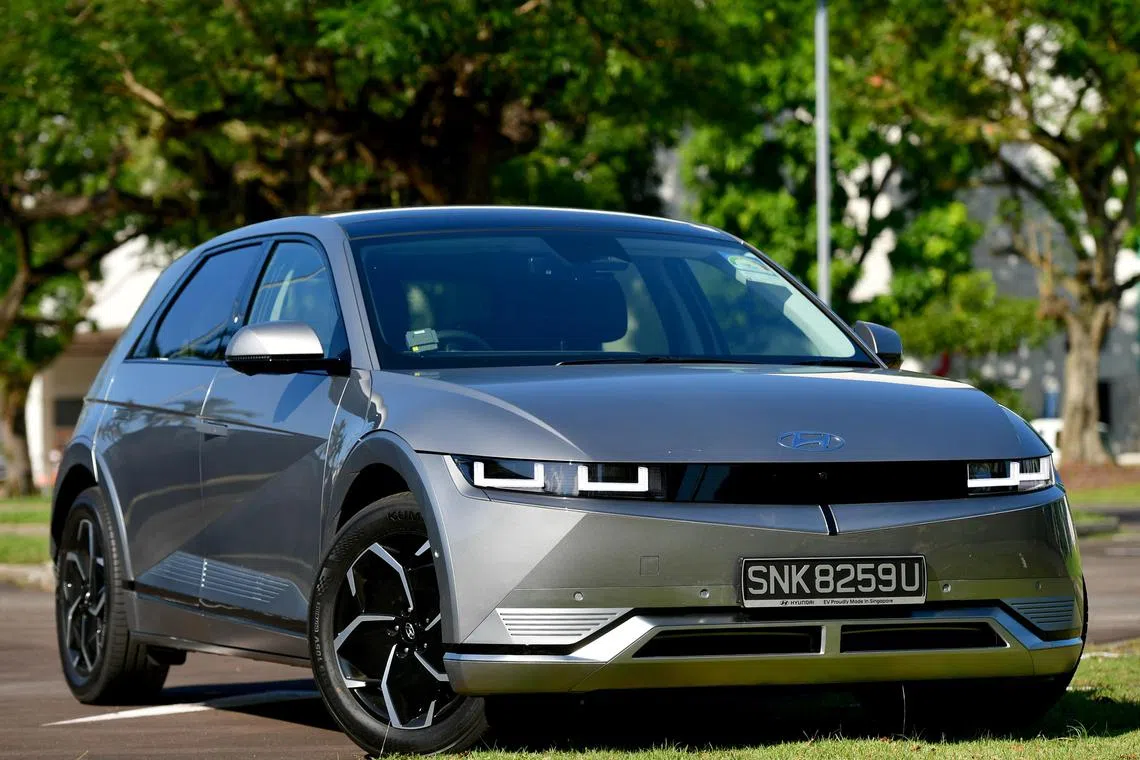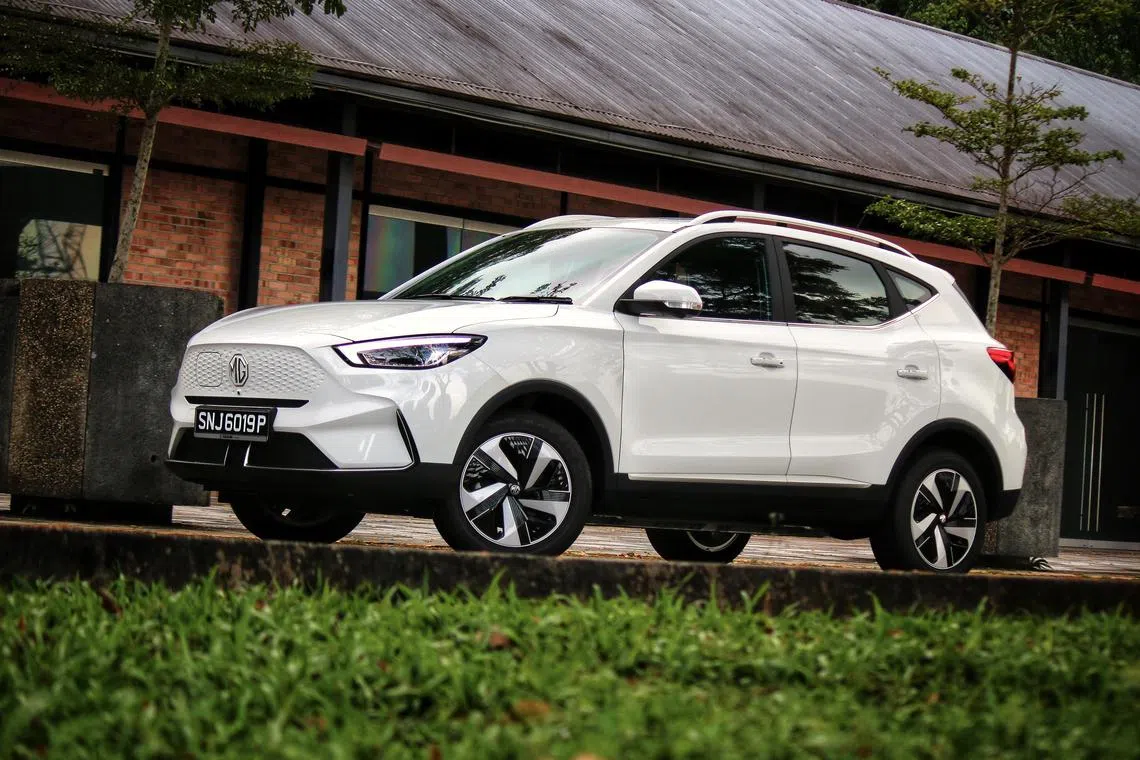Several carmakers shipping EVs here that are almost uniquely Singapore
Sign up now: Get ST's newsletters delivered to your inbox

The Category A COE-friendly 100kW version of the BYD Atto 3 arrived in May 2023 after the car was launched with 150kW initially.
PHOTO: ST FILE
Follow topic:
SINGAPORE – Several car manufacturers are shipping electric vehicles (EVs) that are effectively tailor-made for Singapore to authorised distributors here, in response to the country’s unique certificate of entitlement (COE) system.
Three of the 12 mass market EV models sold by these distributors are not commonly available elsewhere. At least three other EVs of this ilk are expected to be available for sale in the coming months.
The other nine EV models, which have less than 110 kilowatt (kW) of power, are available in mostly identical form in most larger markets.
Singapore is the only place in the world where the Hyundai Ioniq 5 is available with 107kW of power – lower than the 125kW version sold elsewhere.
The entry-level version was specifically created to fall below the Category A COE’s maximum power output threshold, which was revised up to 110kW from 97kW in May 2022.
Besides the Hyundai Ioniq 5, EVs such as the BYD Atto 3
The Category A COE-friendly 100kW version of the BYD Atto 3 arrived in May 2023 after the car was launched with 150kW initially. The more powerful version continues to be sold in places such as Australia and the United Kingdom.
This was also the case with the MG ZS. T
Hyundai will introduce two EVs with less than 110kW output that qualify for Category A COEs.

Singapore is the only place in the world where the Hyundai Ioniq 5 is available with 107kW of power – lower than the 125kW version sold elsewhere.
ST PHOTO: DESMOND FOO
Ora, a new Chinese brand imported by Cycle & Carriage, is expected to launch the Good Cat later in 2023 with 107kW of power. This is the lowest output sold in China, compared with the 126kW version sold elsewhere.
The authorities had revised the maximum power output threshold for Category A to allow more mass market EVs to qualify for this type of COE. As the Category A COE price tends to be lower than that of Category B, the move will help lower the cost of buying a new mass market EV.
So far in 2023, the price difference between the two types of car COEs has been around $20,000.
Motor traders have responded to the change in COE criterion by requesting for more Category A-friendly EV models from manufacturers.
EVs with less than 110kW of power are not common in major markets such as Europe or in car-producing countries like Malaysia and Thailand, where the power output does not directly influence the tax amount.
One place where an EV’s power output does matter is Nepal, where more powerful EVs incur higher taxes.
The BYD Atto 3 and MG ZS sold in Nepal have the same power output as the ones in Singapore.

The 99kW version of the MG ZS became available in Singapore after the latest version of the electric sport utility vehicle was launched in February with 130kW.
PHOTO: BIG FISH PUBLISHING
Industry watchers said it is easier for manufacturers to make changes to an EV’s power output than with internal combustion engine cars. Some may rely on software programming rather than significant hardware changes.
But certain models may require too much work to meet the criterion.
A car dealership executive said the bigger challenge is convincing carmakers that creating a Category A COE-compliant EV will sufficiently increase sales to compensate for the effort.
Even after approving the dealer’s request, it can take months before a lower output EV is ready for launch. This is why the models from BYD and MG were not launched as Category A COE-friendly models from the get-go.
On top of developing the hardware and programming to reduce an EV’s power output, there is also the need for extensive testing and documentation to certify that the cars comply with the power requirement before they can be sold.
Based on May’s registration data, lower power output EVs are not significantly cheaper to import. The basic cost of the 100kW BYD Atto 3 before taxes is only $2,000 cheaper than the 150kW version. This means that the $20,000 or so lower asking price for the 100kW version comes almost entirely from the difference in COE price.
Distributors have requested manufacturers to create car models that cater to Singapore’s unique system before.
The current generation Honda Civic with a 1.5-litre engine, for example, is sold here with 127 brake horsepower (bhp) to qualify for the Category A COE instead of having 178bhp.


